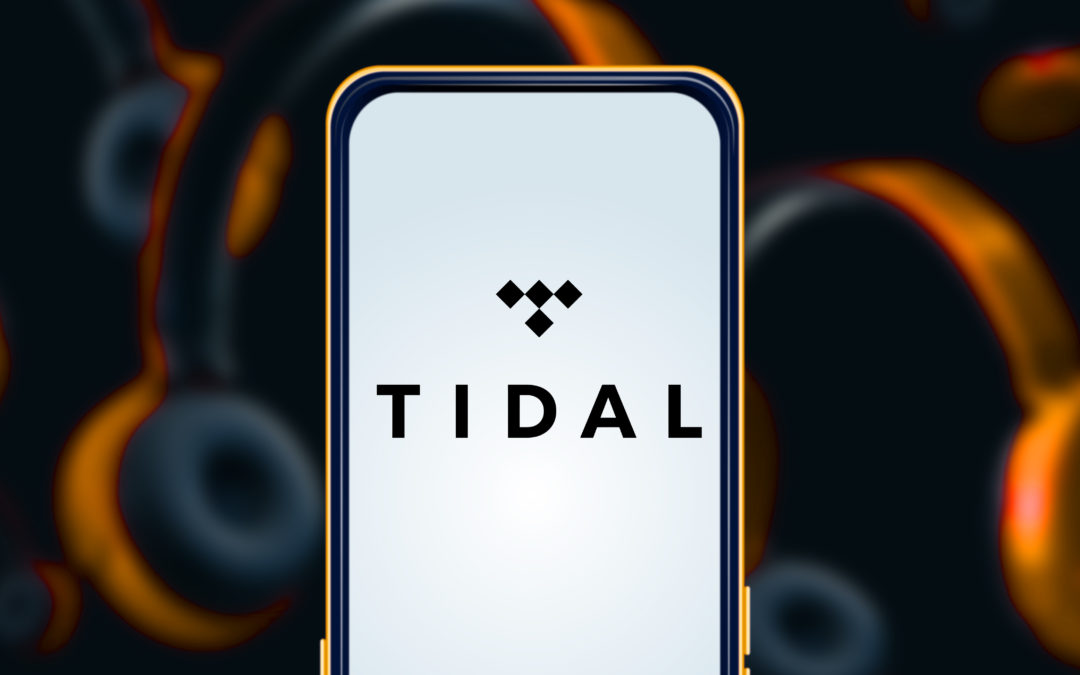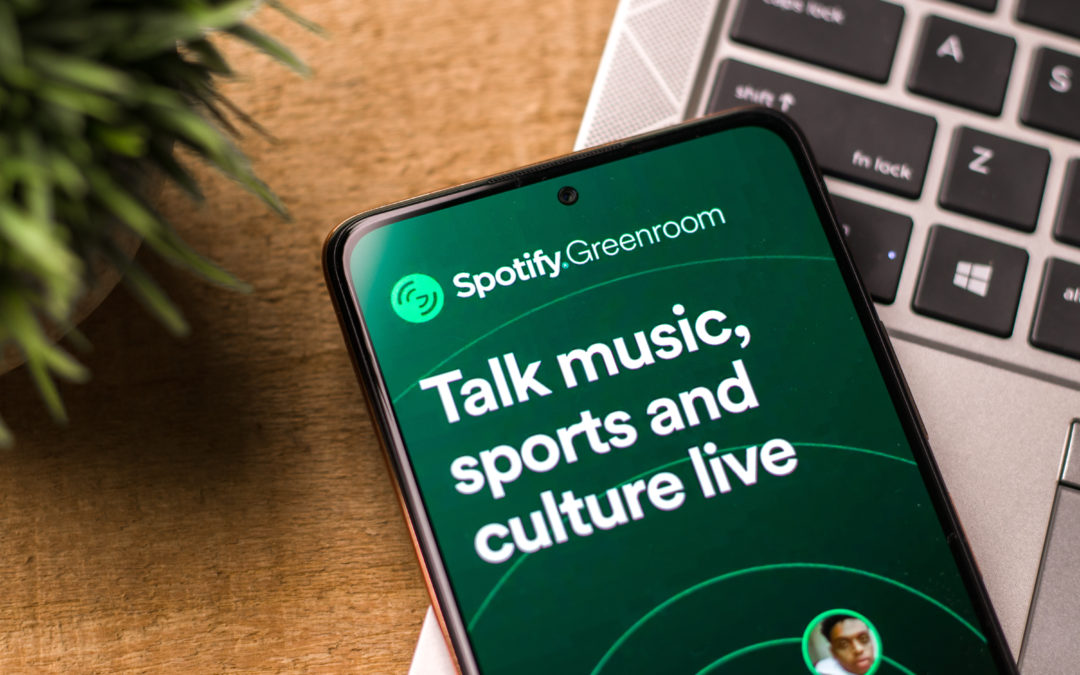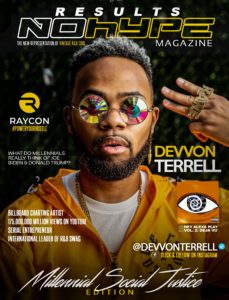
by Jonathan P-Wright | Jun 26, 2024 | Business News, Latest, Music News |
Image credit: DANIEL CONSTANTE / Shutterstock.com
Tidal, the pioneering platform renowned for its commitment to high-fidelity audio, has unveiled a strategic revamp of its lossless and immersive audio formats. This pivotal decision, slated to take effect on July 24th, marks a seismic shift in the company’s approach to delivering unparalleled sonic experiences to its discerning user base.
The Pursuit of Uncompromised Audio Quality
Tidal has long been revered as a bastion of pristine audio quality, catering to the discerning tastes of audiophiles and music enthusiasts alike. The platform’s unwavering dedication to lossless audio formats has set it apart from its contemporaries, garnering a loyal following among those who refuse to compromise on sonic fidelity.
Streamlining the Lossless Audio Experience
In a bold move, Tidal has announced that it will be phasing out support for the Master Quality Authenticated (MQA) and 360 Reality Audio formats. This strategic decision underscores the company’s commitment to providing a seamless and accessible lossless audio experience to its users.
The MQA format, while lauded for its ability to retain superior audio quality with smaller file sizes than traditional FLAC files, has faced challenges in terms of widespread adoption and compatibility. By transitioning away from MQA, Tidal aims to streamline its lossless audio offerings, ensuring a more consistent and user-friendly experience across a broad range of devices and platforms.
Embracing Open-Source and Industry-Leading Standards
Moving forward, Tidal has declared its intention to embrace the Free Lossless Audio Codec (FLAC) as the default format for stereo audio streaming. This open-source codec has gained widespread acceptance within the audiophile community, offering uncompromised audio quality without the constraints of proprietary formats.
Additionally, Tidal has chosen to adopt Dolby Atmos as its preferred format for immersive audio experiences. This cutting-edge technology, renowned for its ability to create a multi-dimensional soundscape, has garnered widespread industry adoption and boasts a vast catalog of compatible devices and content.
Prioritizing Accessibility and Cost-Effectiveness
In a candid acknowledgment of the challenges posed by proprietary formats, Tidal has cited the widespread compatibility, catalog availability, and artist adoption of Dolby Atmos as key factors in its decision-making process. By embracing industry-leading standards, the platform aims to provide its users with a seamless and cost-effective means of accessing high-quality audio content.
Furthermore, Tidal’s embrace of the open-source FLAC format for stereo audio streaming eliminates the need for artists to navigate through third-party intermediaries, fostering a more direct and efficient creative process.
Ensuring a Smooth Transition for Existing Users
For Tidal subscribers who have amassed collections of MQA tracks or albums, the platform has pledged to automatically replace these files with the highest available FLAC quality versions. This seamless transition extends to MQA files downloaded for offline playback, ensuring that users can continue to enjoy their cherished music libraries without interruption.
Conversely, 360 Reality Audio files will be rendered unavailable for streaming, reflecting Tidal’s strategic shift towards more widely adopted immersive audio formats.
Continuous Innovation and Commitment to Excellence
While Tidal has expressed no immediate plans for further changes to its audio format offerings, the company’s recent actions underscore its dedication to continuous innovation and its unwavering commitment to delivering the finest audio experiences to its user base.
This strategic overhaul comes on the heels of Tidal’s decision to consolidate its subscription tiers and lower its monthly pricing to $10.99, a move that aims to make premium audio streaming more accessible to a broader audience.
Redefining the Music Streaming Landscape
Tidal’s bold move to reshape its lossless and immersive audio formats represents a seismic shift in the music streaming landscape. By embracing open-source and industry-leading standards, the platform is poised to deliver unparalleled sonic experiences while fostering a more inclusive and cost-effective ecosystem for artists and music enthusiasts alike.
As the demand for high-fidelity audio continues to grow, Tidal’s commitment to pushing the boundaries of audio quality positions it as a trailblazer in the ever-evolving world of music streaming.
The Audiophile’s Sanctuary: Tidal’s Unwavering Pursuit of Sonic Perfection
For years, Tidal has stood as a beacon of hope for audiophiles and music aficionados seeking an uncompromising sonic experience. The platform’s unwavering dedication to lossless audio formats has garnered a loyal following among those who refuse to settle for anything less than sonic perfection.
Tiers of Audio Quality: Catering to Every Listener’s Needs
Tidal’s tiered approach to audio quality has long been a hallmark of its service, offering a range of options to cater to diverse listening preferences and technical capabilities. At the entry-level, the platform provides a low-quality tier that utilizes AAC files capped at 320kbps, suitable for casual listening or scenarios where bandwidth is limited.
For those seeking a more immersive experience, the high-quality tier offers CD-quality lossless FLAC files, ensuring that every nuance and detail of the music is faithfully reproduced.
However, it is the Max tier that truly sets Tidal apart, catering to the most discerning audiophiles. Until recently, this tier featured MQA and higher-resolution FLAC files, pushing the boundaries of audio fidelity and offering an unparalleled listening experience.
The MQA Conundrum: Balancing Innovation and Accessibility
Tidal’s decision to discontinue support for the MQA (Master Quality Authenticated) format has sent ripples through the audiophile community. While MQA garnered praise for its ability to retain superior audio quality with smaller file sizes than traditional FLAC files, its adoption was hindered by the requirement for specialized hardware or software to play the files.
This limitation, coupled with the introduction of Tidal’s HiRes FLAC format last year, signaled the impending demise of MQA on the platform. By making HiRes FLAC the preferred default for Max quality streaming, Tidal effectively paved the way for a more streamlined and accessible approach to lossless audio delivery.
Embracing Open Standards: The Rise of FLAC and Dolby Atmos
In a move that underscores Tidal’s commitment to accessibility and cost-effectiveness, the platform has embraced the Free Lossless Audio Codec (FLAC) as the default format for stereo audio streaming. This open-source codec, widely adopted by the audiophile community, offers uncompromised audio quality without the constraints of proprietary formats.
Additionally, Tidal has chosen to adopt Dolby Atmos as its preferred format for immersive audio experiences. This cutting-edge technology, renowned for its ability to create a multi-dimensional soundscape, boasts widespread industry adoption and a vast catalog of compatible devices and content.
By aligning with these industry-leading standards, Tidal aims to provide its users with a seamless and cost-effective means of accessing high-quality audio content, while fostering a more inclusive and efficient creative ecosystem for artists.
Prioritizing User Experience and Artist Empowerment
Tidal’s strategic decisions regarding audio formats were driven by a multitude of factors, chief among them being the prioritization of user experience and artist empowerment. By embracing widely compatible formats like Dolby Atmos and the open-source FLAC, the platform aims to eliminate barriers to entry and ensure that its users can seamlessly access premium audio content across a broad range of devices.
Moreover, Tidal’s embrace of FLAC for stereo audio streaming eliminates the need for artists to navigate through third-party intermediaries, fostering a more direct and efficient creative process. This move not only empowers artists but also aligns with Tidal’s overarching mission of delivering uncompromised audio experiences to its discerning user base.
Ensuring a Smooth Transition for Existing Libraries
In recognition of the potential disruption caused by the format changes, Tidal has implemented measures to ensure a smooth transition for its existing user base. For subscribers who have amassed collections of MQA tracks or albums, the platform has pledged to automatically replace these files with the highest available FLAC quality versions.
This seamless transition extends to MQA files downloaded for offline playback, ensuring that users can continue to enjoy their cherished music libraries without interruption. Conversely, 360 Reality Audio files will be rendered unavailable for streaming, reflecting Tidal’s strategic shift towards more widely adopted immersive audio formats.
Continuous Innovation and Commitment to Excellence
While Tidal has expressed no immediate plans for further changes to its audio format offerings, the company’s recent actions underscore its dedication to continuous innovation and its unwavering commitment to delivering the finest audio experiences to its user base.
This strategic overhaul comes on the heels of Tidal’s decision to consolidate its subscription tiers and lower its monthly pricing to $10.99, a move that aims to make premium audio streaming more accessible to a broader audience. By combining these initiatives, Tidal is poised to redefine the music streaming landscape, offering unparalleled sonic experiences while fostering a more inclusive and cost-effective ecosystem for artists and music enthusiasts alike.
The Future of Music Streaming: Tidal’s Vision
As the demand for high-fidelity audio continues to grow, Tidal’s commitment to pushing the boundaries of audio quality positions it as a trailblazer in the ever-evolving world of music streaming. By embracing open standards and industry-leading technologies, the platform is poised to deliver unparalleled sonic experiences while fostering a more inclusive and cost-effective ecosystem for artists and music enthusiasts alike.
With its unwavering pursuit of sonic perfection and its dedication to continuous innovation, Tidal stands as a beacon of hope for audiophiles and music aficionados seeking an uncompromising listening experience. As the future of music streaming unfolds, Tidal’s vision promises to redefine the boundaries of what is possible, elevating the art of music to new heights and ensuring that every note, every nuance, and every sonic detail is faithfully reproduced for generations to come.

by Jesse Swindell | Nov 10, 2023 | Business News, Latest |
Image credit: JHVEPhoto / Shutterstock.com
SiriusXM, a leading audio entertainment company, recently made a series of significant announcements at its “Next Generation” event held in New York. The most notable was the unveiling of its revamped streaming app, designed to offer an enhanced user experience with an array of advanced features. This move signifies SiriusXM’s strategic shift to cater to the changing consumption patterns and preferences of the younger generation.
A New Era for SiriusXM
The newly innovated SiriusXM app is set to launch on December 14 on iOS, Android, and Amazon Fire devices, with further rollouts planned for additional platforms in early 2024.The redesigned SiriusXM app aims to provide a “lean-back,” user-friendly streaming experience that prioritizes content discovery. In addition to the app revamp, SiriusXM also unveiled its new logo and mascot. The new logo features the letter ‘S’ with a star in the center, symbolizing SiriusXM’s commitment to “embracing the stars” and its “promise to bring listeners closer.” The company also introduced its cute puppy mascot named Stella. Furthermore, SiriusXM launched an online store where fans can purchase SiriusXM-branded merchandise, enhancing the brand’s visibility and reach.
Catering to the Younger Demographics
SiriusXM’s redesigned app is a strategic move to reach younger generations who have notably moved away from traditional radio. To allure this demographic, the company is introducing new guest DJ channel takeovers from more than 160 artists, including Gen Z pop star Olivia Rodrigo, Cardi B, Luke Combs, Alice Cooper, and more. SiriusXM is adding a variety of new channels and shows to its content library, hosted and curated by famous personalities such as Kelly Clarkson, John Mayer, James Corden, and Shaggy, among others.
Looking Ahead
SiriusXM has big plans for the upcoming year, including a distribution relationship with Amazon-owned Audible and an expanded agreement with automotive brand Polestar. These partnerships symbolize SiriusXM’s intent to broaden its reach and cater to a wider audience.n the competitive landscape of digital audio entertainment, SiriusXM’s new streaming app and strategic partnerships appear to be a promising attempt to regain lost ground and attract new users. However, only time will tell if these efforts will help SiriusXM compete with industry giants like Spotify and Apple Music.

by Jonathan P-Wright | Nov 10, 2023 | Business News, Latest |
Image credit: Ink Drop / Shutterstock.com
Spotify, the renowned music streaming platform, has recently made a significant stride in enhancing its user offerings. A mere month after the announcement of introducing a selection of audiobooks as part of its Premium subscription, the company is now extending this service to its U.S. user base for the first time.
A Progressive Leap
This expansion grants Premium subscribers 15 hours of monthly audiobook listening time, a notable rise from the initial 150,000 titles in the U.K. and Australia to a vast catalog of 200,000 titles. This move is a clear sign of Spotify’s commitment to diversifying its content and catering to the evolving preferences of its users. Spotify first ventured into the realm of audiobooks in September 2022, following its acquisition of Findaway, a digital audiobook distributor, in 2021. The company debuted with a catalog of approximately 300,000 titles for U.S. users, later extending its reach to other English-speaking markets. Canada was added to the list in early 2023.
apping into a Growing Market
Spotify has acknowledged the potential of tapping into the growing market of audiobooks. Even though audiobooks currently hold a 6% to 7% share of the broader book market, the category is witnessing a 20% year-over-year growth. This growth is majorly driven by Gen Z and millennials, with 72% of 18- to 34-year-olds indulging in audiobook listening.
Initially, accessing Spotify’s audiobooks was a somewhat complex process, primarily due to the company’s reluctance to share commissions with app stores on in-app purchases. Users had to purchase titles individually via Spotify’s website before listening to them in-app. However, the introduction of a certain number of hours in the Premium subscription has streamlined this process, enabling users to select a book and start listening with a single click. Users desiring more time can opt for an additional 10 hours by purchasing a “top-off.”
Discoverability and Content Diversity
Spotify has ensured easy discoverability of its audiobooks. They can be found on the app’s Home feed or by searching for a specific title. A curated selection of popular titles is also available for browsing in the app’s audiobook hub.
Notable titles include recent releases like Britney Spears’ “The Woman in Me” and Jesmyn Ward’s “Let Us Descend,” alongside works by renowned authors such as Janet Evanovich, John Grisham, Stephen King, Colleen Hoover, and musical artists like Willie Nelson and Dave Grohl.
The platform boasts over 70% of bestselling titles, encompassing books from the big five publishers as well as independent publishers and authors. The titles span across various genres and include classics like Emily Brontë’s “Wuthering Heights.”
Spotify’s Continued Growth
In its most recent quarter, Spotify reported a 16% year-over-year growth in paying subscribers, now totaling 226 million. Its monthly active users saw a 26% increase, reaching 574 million, surpassing the company’s forecast by 2 million. Revenue also rose by 11% year-over-year to €3.4 billion ($3.63 billion USD), aided by recent price hikes. This development heralds a promising upswing for Spotify, underlining its forward-thinking strategy and commitment to user satisfaction. The inclusion of audiobooks in its Premium subscription not only broadens its content spectrum but also positions it favorably to tap into the burgeoning audiobook market.

by Jonathan P-Wright | May 31, 2022 | Business News, Latest, Music News, New Music Alert |
TIDAL continues to be a major player in the music streaming world
Since its launch in 2015, TIDAL has continued to be a major player in the music streaming world. The company has always been focused on offering a high-quality experience to its users, and that has paid off. In 2019, TIDAL had three times the number of subscribers as it did in 2016.
What is TIDAL?
TIDAL is a music streaming service that offers its users high-quality audio and exclusive content. The company has been a major player in the music streaming world since its launch in 2015, and it continues to grow in popularity. TIDAL offers two tiers of service: a free, ad-supported version and a premium, subscription-based version.
The premium service offers lossless, high-fidelity audio quality and access to exclusive content, including live concerts and music videos. TIDAL has a growing list of celebrity supporters, including Jay-Z, Beyonce, Rihanna, Madonna, and Kanye West.
How TIDAL got its start
TIDAL is a music streaming platform that was launched in 2014. The company was founded by a group of music industry veterans, including Jay Z, who saw an opportunity to create a platform that would offer high-quality audio and a better user experience than what was currently available.
Since its launch, TIDAL has become one of the most popular music streaming platforms, with over 60 million users worldwide. The company has continued to innovate, most recently launching a new feature that allows users to download songs for offline listening.
TIDAL was founded in 2014 by a group of music and technology entrepreneurs. The company’s mission is to provide artists with a better way to share their music with the world. TIDAL is headquartered in New York City.
The company’s flagship product is a streaming music service that offers high-quality audio and video content. TIDAL also offers a variety of other features, including exclusive content, live events, and artist-curated playlists.
In just a few short years, TIDAL has become one of the most popular streaming services in the world. The company has over 3 million paying subscribers and continues to grow at an impressive rate.
TIDAL’s success is due in large part to its commitment to offering a superior experience for both artists and fans. The company’s focus on quality has helped it stand out in a crowded marketplace, and its dedication to giving artists a better platform has made it a favorite among many top musicians.
As TIDAL continues to grow, it will undoubtedly remain a significant player in the streaming music world.
Despite challenges, TIDAL remains a significant player in the music streaming world, and it looks poised to continue its success for years to come.
What sets TIDAL apart from other streaming services
When it comes to music streaming services, TIDAL is one of the top players in the game. But what sets TIDAL apart from its competitors? For starters, TIDAL offers lossless audio quality. This means that you can stream music at a higher bitrate than other services, which results in better sound quality.
TIDAL also offers exclusive content from some of the most prominent artists globally, including Jay-Z, Beyonce, and Rihanna. And if you’re a fan of music videos, TIDAL has you covered there, too, with its massive selection of music videos available to stream. So if you’re looking for a premium streaming experience, TIDAL is definitely worth checking out.
TIDAL’s History
When TIDAL first launched in 2014, it was billed as the first music streaming service that offered lossless, CD-quality audio. This made it a favorite among audiophiles, who were willing to pay a premium for the higher quality sound. In the years since, TIDAL has continued to be a dominant player in the music streaming world, thanks to its commitment to quality and its exclusive content offerings.
TIDAL’s history is one of innovation and success. The company was founded by a group of music industry veterans, including Jay-Z and Kanye West.
Thanks to its high-quality sound and exclusive content offerings, TIDAL quickly gained traction with users. In 2016, Sprint acquired TIDAL, which helped boost its profile even further. Today, TIDAL remains one of the leading music streaming services, with millions of users worldwide. TIDAL was purchased by Jack Dorsey’s Square platform in 2021.
TIDAL’s Impact on the Music Industry
TIDAL continues to be a prominent player in the music streaming world, with a recent report revealing that the platform now has over three million paid subscribers. This is a significant increase from the last reported figure of 1.4 million, and it cements TIDAL’s position as one of the most popular music streaming services.
But what does this mean for the music industry? TIDAL’s arrival on the scene was a game-changer, offering high-quality lossless audio and exclusive content from some of the biggest names in music. This put pressure on other streaming services to up their game, and we’ve seen improvements across the board as a result.
Now that TIDAL is established as a leading player, it looks like it’s here to stay. The platform continues to invest in exclusive content and artist partnerships, which is good news for music fans. But it also means that other streaming services need to keep up if they want to stay competitive.
TIDAL’s artist-first approach
TIDAL has always been a company that puts artists first. Whether it’s through exclusive content or high-quality audio, TIDAL has always strived to give artists the best platform to showcase their music. And that commitment to artists continues with the TIDAL blog. The TIDAL blog is a place where artists can share their stories, insights, and perspectives on the music industry. The blog is also a place where fans can go to learn more about their favorite artists.
The TIDAL blog is a great way for artists to connect with fans and give them an inside look at their creative process. But it’s also a place where fans can learn more about the artists they love and discover new music.
The TIDAL blog is a must-read for any music fan with exclusive interviews, behind-the-scenes photos, and more.
TIDAL’s exclusive content
TIDAL continues to be a key player in the music streaming world with its exclusive content offerings. The company has a wide variety of content, including music videos, live performances, etc. TIDAL also offers an artist-centric approach to its service, giving artists greater control over their work. This has led to several impressive results, such as Beyonce’s Lemonade album being released exclusively on TIDAL. While other streaming services may offer more comprehensive libraries, TIDAL’s focus on quality over quantity has kept it afloat in the ever-changing world of online music.
How to use TIDAL
If you’re a music lover, there’s a good chance you’ve heard of TIDAL. Launched in 2014, TIDAL is a music streaming service that offers high-quality audio and videos. It’s also one of the few services that provide lossless, CD-quality audio tracks. In other words, TIDAL is the perfect place to go if you’re looking for an immersive listening experience.
So how do you use TIDAL? First, you’ll need to sign up for an account. You can do this on the website or through the mobile app. Once you have an account, you can explore the massive catalog of music and videos available on TIDAL. You can search for specific artists, songs, or albums or browse by genre.
One of the best things about TIDAL is the ability to create custom playlists. If you’re not sure where to start, check out some of the pre-made playlists curated by TIDAL’s team of experts. And if you find a song or album that you love, be sure to add it to your favorites so you can easily find it again later.
Ready to start streaming with TIDAL
Conclusion
In conclusion, TIDAL continues to be a leading player in the music streaming world. TIDAL is one of the best options for music lovers and audiophiles alike with its hi-fi sound quality, exclusive content, and artist-friendly approach. TIDAL is definitely worth checking out if you’re looking for a premium streaming experience.

by Jonathan P-Wright | Jan 10, 2022 | Business News, Latest, Music News |
Music Chat Apps: How they’re Building the Musical Genres of Tomorrow
Clubhouse and Spotify Greenroom help build the musical genres of tomorrow by connecting music creators, DJs, and artists with listeners. Plus, these apps streamline the process of submitting demos to labels and their inviting contributions from established musicians as well as those tantalizing unreleased joints.
Reason for Audio Chat Apps’ Popularity
Audio chat apps are all the rage in today’s technology industry. Many of these apps are introducing possibilities for the future of music. Chatting with sound creates an interactive experience like nothing before and allows people to express themselves differently through this medium.
How Audio Chat Apps are Representing the Future of the Music Industry
The direction the audio chat apps like Spotify Greenroom and Clubhouse are taking is groundbreaking. They are representing an entire industry that has been transformed into a new genre not through physical interaction but through the audio messaging of various artists, producers, and anyone who wants to be involved in the digital music community. It’s true that VR and AR will play a massive part in the future of music, but the highest chance for success will lie with chat apps. They offer constant updates, close interaction with fans, and instantaneous sharing via other networking sites. It’s not just tomorrow’s future that chat apps are representing – they’re also assisting in building and representing today’s musical space. Spotify Greenroom and Clubhouse are leading the audio-chat race in 2022.
Benefits to Creating Social Media Content
The goal is to keep an eye on what works for your audience so that you can expand on it. This may mean using the same slang or memes they use or posting content that talks about subjects your followers care about. Things like sports, relationships, and city life are popular topics to post about often. Social media content is a powerful way to engage consumers in a brand’s story and maximize a brand’s reach. Marketers can use social media channels to start deep conversations about their brand that resonate with the target. People who consume much of their music from streaming services or YouTube channels often create social media content themselves.
Conclusion: The Future of Audio Chat Music Apps
Music Chat Apps are taking control of the next generation of artists. They ensure that our next reality’s soundtracks are created before it happens. The future of music, at least with regard to streaming services, will be defined by how more of the tools are utilized on chat apps. Streaming services, in general, are seeing more competition in the space with streaming creativity in the future. Spotify Greenroom and Clubhouse continue to provide unparalleled engagement outlets.








RECENT COMMENTS